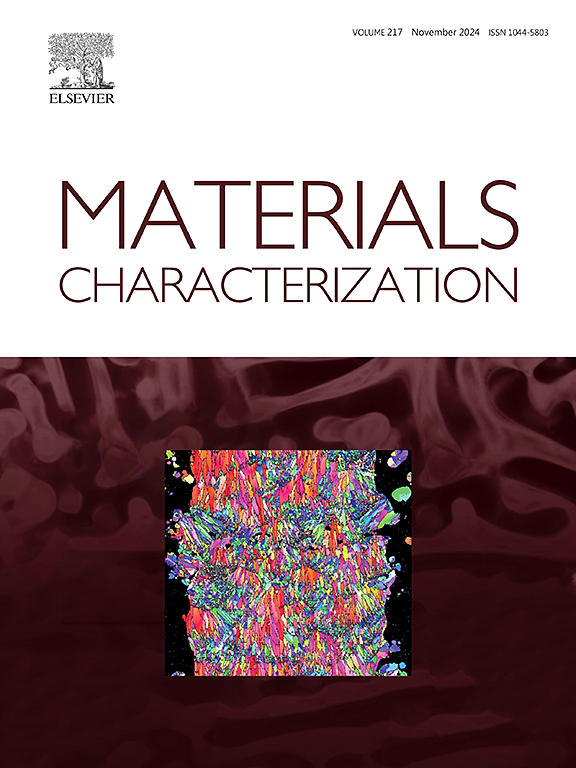Mo-30 wt%cu composites with excellent electrical and mechanical properties strengthened by interfacial diffusion
IF 4.8
2区 材料科学
Q1 MATERIALS SCIENCE, CHARACTERIZATION & TESTING
引用次数: 0
Abstract
Mo![]() Cu composites are extensively applied in various aspects due to their excellent properties. The poor interfacial bonding between the two phases leads to inferior mechanical properties and other drawbacks. In this work, the Mo-30wt.%Cu (MC30) composites were prepared from the ultrafine Mo powder and Cu powder through powder sintering, rolling, and heat treatment processes. It was found that forming interfacial diffusion layers during the deformation process significantly improved the strength and plastic deformation ability of Mo
Cu composites are extensively applied in various aspects due to their excellent properties. The poor interfacial bonding between the two phases leads to inferior mechanical properties and other drawbacks. In this work, the Mo-30wt.%Cu (MC30) composites were prepared from the ultrafine Mo powder and Cu powder through powder sintering, rolling, and heat treatment processes. It was found that forming interfacial diffusion layers during the deformation process significantly improved the strength and plastic deformation ability of Mo![]() Cu alloys while maintaining excellent electrical properties. The microstructure evolutions of MC30 composites under different conditions were investigated through characterizations using EBSD and TEM technologies. In addition, the interfacial diffusion layer with a thickness of approximately 13 nm was formed after thermo-mechanical deformation, which possessed a high interfacial coordinated deformation capability and greatly improved the plastic deformation capability (17.7 %) while ensuring a high strength (624 MPa), as well as a good electrical conductivity (48.6 % IACS). The interdiffusion layer caused the fracture mechanism of the MC30 alloy to shift from transgranular fracture to the mixed mode of ductile and brittle fractures.
Cu alloys while maintaining excellent electrical properties. The microstructure evolutions of MC30 composites under different conditions were investigated through characterizations using EBSD and TEM technologies. In addition, the interfacial diffusion layer with a thickness of approximately 13 nm was formed after thermo-mechanical deformation, which possessed a high interfacial coordinated deformation capability and greatly improved the plastic deformation capability (17.7 %) while ensuring a high strength (624 MPa), as well as a good electrical conductivity (48.6 % IACS). The interdiffusion layer caused the fracture mechanism of the MC30 alloy to shift from transgranular fracture to the mixed mode of ductile and brittle fractures.
求助全文
约1分钟内获得全文
求助全文
来源期刊

Materials Characterization
工程技术-材料科学:表征与测试
CiteScore
7.60
自引率
8.50%
发文量
746
审稿时长
36 days
期刊介绍:
Materials Characterization features original articles and state-of-the-art reviews on theoretical and practical aspects of the structure and behaviour of materials.
The Journal focuses on all characterization techniques, including all forms of microscopy (light, electron, acoustic, etc.,) and analysis (especially microanalysis and surface analytical techniques). Developments in both this wide range of techniques and their application to the quantification of the microstructure of materials are essential facets of the Journal.
The Journal provides the Materials Scientist/Engineer with up-to-date information on many types of materials with an underlying theme of explaining the behavior of materials using novel approaches. Materials covered by the journal include:
Metals & Alloys
Ceramics
Nanomaterials
Biomedical materials
Optical materials
Composites
Natural Materials.
 求助内容:
求助内容: 应助结果提醒方式:
应助结果提醒方式:


